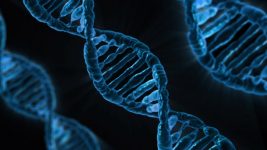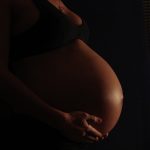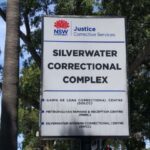Taking Science to Court – The Case of DNA Evidence

The recent matter of Fitzgerald v The Queen highlights the ongoing refusal of the High Court to pay unearned deference to the supposed ‘gods’ of science.
Fitzgerald emphasises that DNA evidence and forensic expertise (and indeed any lofty statements from people in white coats) really are no more and no less ‘special’ than other evidence before the Court.
Far from being taken on face value, such scientific material is now receiving closer scrutiny by the judicial system in terms of its legal weight and factual utility.
Unravelling DNA evidence
In Fitzgerald, the appellant successfully argued that his placement by the prosecution both at the scene and as a part of the commission of the crime could not be proved beyond reasonable doubt.
The relevant source of DNA evidence was a didgeridoo upon which trace amounts of Mr Fitzgerald’s DNA were located.
In overturning the decision of the South Australian Supreme Court, the High Court constituted by Hayne, Crennan, Kiefel, Bell and Gageler JJ undertook the kind of precise and insightful legal analysis that was of itself nothing short of forensic.
Undaunted by the subtle scientific differences between DNA that is ‘contact’ or ‘fluid’, ‘primary’ or ‘secondary’ or indeed from a ‘major’ or ‘minor’ contributor, their Honours confidently dissected both the available evidence and the treatment that this had received previously at the Supreme Court down in Adelaide.
In finding that the Court of Criminal Appeal had missed some important inferences in the expert evidence regarding placement and timing of DNA, the High Court summarised that “…it could not be accepted that the evidence relied on by the prosecution was sufficient to establish beyond reasonable doubt that the appellant was present at, and participated in, the attack. [36]”
In examining Dr Henry’s expert testimony closely, their Honours ascertained nuanced yet crucial differences in the science – which had been missed at first instance, and which ultimately sealed the appellant’s acquittal.
Calling all experts…
It seems that our High Court – as well as the lower courts in following suit – will continue to closely monitor scientific ‘experts’ in the courtroom.
That trend is perfectly displayed in the case of Honeysett v The Queen [2014] HCA 29, where a dim view was taken by the Court of the not-quite-accurate labelling of an ‘expert’ witness for the prosecution.
On appeal from the NSW Supreme Court, the exception to the rule on opinion evidence, set out in s79(1) of the Evidence Act 1995 (NSW) was highlighted. It all went rather pear-shaped for the prosecution when a well-qualified anatomist unfortunately began giving opinions about what he thought could be seen in some tendered CCTV footage.
The High Court considered that the evidence given – and the manner in which it was given – “…gave the unwarranted appearance of science to the prosecution case”[45].
It’s safe to say that courts will see red when big words are used rather than simple ones: and it probably didn’t help the professor in this case that instead of just saying ‘skinny’, he threw in the high-sounding term ‘ectomorphic’. A classic case of simply sticking with what you (officially) know?
Expert evidence into the future
So what might these trends in judicial thinking mean for the prosecution, the defence and for the justice system itself into the future?
It could go a number of ways.
First, it’s likely that seemingly simple concepts such as ‘expert’ and ‘opinion evidence’ will be closely supervised by the courts.
As seen in the above cases, what once might have been accepted as impressive high-tech phrases are now treated like any other utterances in the courtroom. They will be checked, examined and cast into the spotlight of plain speaking.
To avoid receiving a judicial shoulder-charge in the future, counsel and instructing solicitors will no doubt do well to avoid encouraging unnecessary ‘scientific-sounding’ words in their experts’ evidence.
Any ideas about blinding the courtroom with scientific vocabulary will almost certainly receive the ire of the bench. In fact, rather than simply rely on experts – scientific or otherwise – lawyers themselves will need to take a magnifying glass to the expert evidence themselves.
To reduce any chance of misdirection or unmet onus for example, counsel has to be clearly aware of how the scientific data stacks up against the law: like in the Fitzgerald case, how a ‘less likely’ chance of DNA transfer occurring means something crucially different to a transfer ‘rarely’ occurring, for example. Leaving it to ‘the experts’ could well be a thing of the past.
One part, bigger puzzle
Of course, the Court striking a blow to misunderstood and/or miscommunicated science can raise challenges on both ends of the bar table.
Because, for a start, this material is just one element in the bulging brief of evidence: whether sufficient legal resources are available to scrutinise all aspects of evidence prior to trial can be hit and miss, depending upon the legal team’s size and capabilities.
Undoubtedly though, making the ‘experts’ the be-all-and-end-all of the case can be a dangerous move.
And corralling the expert strictly within the bounds of their expertise can certainly also be a challenge; the professor in Honeysett had all sorts of good skills, abilities, advice and qualifications, but as their Honours pointed out – you should only speak to what you officially know.
The end of the white lab coat?
As a society, we’ve gotten pretty good at rolling our eyes when an Aussie sports star or actor pops up in a white coat and earnestly tells the TV audience that this or that product has ‘scientifically proven results’. (We don’t even need to read the fine print to know that the ‘science’ was probably ‘proven’ on five bus travellers in Tasmania!)
Yet when it comes to our courts and the use of scientific evidence and experts, we need to heed the High Court’s advice and take each piece of evidence purely on its merits.
Reliance on a ‘much-lauded’ expert with a huge vocabulary is probably not the safe bet that it once might have been.
And DNA, if seen simply for what it is (not what someone wishes it was) can in some instances reveal the hidden glimmer of a reasonable doubt.
The lessons from Fitzgerald and Honeysett are simple but important: Know your evidence; don’t try to make the evidence do more than it’s capable of; stick to your expertise and speak as plainly as you possibly can. Pretty handy tips – and not just for the courtroom.
Receive all of our articles weekly
Author






